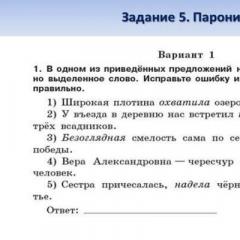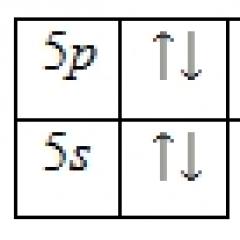Prepositions in Portuguese. Prepositions - Portuguese. Articles - Expressions
If you've landed on this page, you probably already understand some or perhaps even a lot of Portuguese. Because the information below will be absolutely useless if you do not have the slightest idea about the basics of the Portuguese language. In this case, I can only recommend starting with a free course, or an individual one. Whichever is more convenient for you.
In the case of the free basic one, you can sign up in the form on the right (you will find a subscription form on the side).
Now let's get back to the topic. Often, during the learning process, people begin to get lost and confused among the huge number of Portuguese prepositions, the formation of conjugations, and cases. All this gets so mixed up in my head, one with the other, a mess arises. And the only proven method that I know that still really works is to print a sign, or hand-paint it with the necessary data and rules. And hang this beauty next to your workplace. It can be next to the computer, or on the wall near the workplace. Maybe on the refrigerator. Whichever is more convenient for you. The point is that this sign should blur your eyes all the time until it becomes known to you as your mobile phone number... (though there are people who can’t even remember their mobile phone number, well, that’s by the way). Now let's get down to business.
Look at the screenshots (pictures) of the sign below. I didn’t write it down on the page, I just took a screenshot and show what prepositions are needed to form cases in Portuguese grammar. But of course, you look and forget. It's logical. To avoid forgetting, do this.
Just below there is a link to this document in PDF format, download it to your computer, print it, and voila hang it on your wall. Now, every day when you do something, this frame with cases will, frankly speaking, be in front of your nose. This way, day after day, your brain will slowly absorb these rules, and there will be no need to cram. The main thing is that you still do practice, and not just hang there and that’s it. Hanging will not improve anything, neither in memory nor in skills.
So, let's learn Portuguese!
My motto: Speak quickly, understand easily!
After studying several Romance languages, Portuguese grammar doesn't seem particularly difficult. However, this is an illusion, as has already been discussed in our previous articles. In addition to Futuro do Conjuntivo and Infinitivo Pessoal, Portuguese, like any European language, also has prepositions.
Prepositions are different primarily because they combine with articles and pronouns to form weird combinations that you need to be aware of if you write (which is a little easier) and if you speak (which is much more difficult) in Portuguese. This is especially true for those who carelessly (just kidding!) started learning Portuguese after mastering Spanish.
There is an excellent website that contains, which we not only recommend that you familiarize yourself with, but also print it out and keep it in front of your eyes while doing homework and, perhaps, while talking in class.
You can familiarize yourself with the main prepositions of the Portuguese language on this site. Some prepositions are identical in spelling and use to Spanish ones - for example, “entre”, “com”, “de”, etc. There are prepositions that are written differently, but are used in the same way as in Spanish - for example, the preposition “sem” means the same thing as “sin” in Spanish. However, there are prepositions that, although they have a Spanish equivalent, are used differently. For example, the preposition “após” (“after”) is used in Portuguese without “de”, but in Spanish the presence of “de” is required – “después de”.
In addition, a difficult point, as in all other European languages, is the use of verbs with prepositions, which remind us of English phrasal verbs. Such combinations must be learned. At the same time, here again a situation of discrepancy between the Portuguese and Spanish languages arises. For example, in Portuguese the verb “to worry” is used with the preposition “com” (“preocuparse com”), and in Spanish it is used with the preposition “de”. If you are learning Portuguese after Spanish, it is advisable to write down all cases of discrepancies separately and keep them in mind when writing papers or practicing speaking.
We have prepared for you a small selection of articles on the topic of Portuguese verbs with prepositions.
In addition, there is a book dedicated to the main differences between Spanish and Portuguese, which we recommend to those brave souls who took up Portuguese after Spanish (or vice versa).
We hope that we have helped you understand the use of Portuguese prepositions. We wish you a wonderful summer!
This lesson covers the following topics: Prepositions in expressions for time and place, demonstrative pronouns. This course is designed to help you learn grammar and improve your vocabulary. Try to concentrate on the following examples as they are very important for learning the language.
Prepositions
Grammar Tips:
Prepositions in expressions for time and place and demonstrative pronouns are very important to learn because they are used in everyday communication. Try to remember the new words you have. Also try to write down words that you do not understand or expressions that you are not familiar with.
The following table provides some examples, please read them carefully and determine if you can understand them.
You are finished with the first table. Did you notice any grammatical patterns? Try to use the same words in different sentences.
Prepositions - Expressions
The following table will help you understand this topic more deeply. It's important to remember any new words you come across because you'll need them later.
| Prepositions | Prepositions |
|---|---|
| O | sobre |
| higher | acima |
| through | através de |
| after | depois |
| against | contra |
| between | entre |
| near | em torno |
| How | como |
| V | em |
| before | antes |
| behind | atras |
| below | abaixo |
| under | abaixo |
| Near | ao lado de |
| between | entre |
| outside | alem |
| But | mas |
| By | por |
| despite | apesar de |
| down | para baixo |
| during | durante |
| with the exception of | exceto |
| For | para |
| from | de |
| V | em |
| inside | dentro de |
| V | em |
| near | perto |
| next | proximo |
| from | de |
| By | em |
| against | oposto |
| from | fora |
| outside | fora de |
| behind | sobre |
| V | por |
| plus | mais |
| round | aproximadamente |
| With | desde |
| how | que |
| through | através de |
| before | até |
| To | para |
| To | em direção a |
| under | sob |
| Unlike | differente de |
| before | até |
| up | para cima |
| through | via |
| With | com |
| V | dentro de |
| without | sem |
| 2 words | duas palavras |
| in accordance with | conforme |
| because of | por causa de |
| close to | proximo a |
| because of | devido a |
| with the exception of | exceto |
| far from | distante, longe |
| inside | dentro de |
| instead of | em vez de |
| Near | perto de |
| Near | proximo de |
| outside | fora de |
| before | antes de |
| 3 words | três palavras |
| how much | tanto quanto |
| and | bem como |
| in addition to | alem de |
| before | na frente de |
| despite | apesar de |
| on behalf of | em nome de |
| at the top | em cima de |
| demonstrative prepositions | pronomes demonstrativos |
| This | Este, Esta |
| What | aquele, aquela |
| these | estes, estas |
| those | aqueles, aquelas |
We hope this lesson helped you with your grammar and vocabulary
Anonymous Saturday, June 13, 2015 Comments: 3Hello, friends! Today we will look at such a complex and multifaceted topic as “Articles in the Portuguese language”. Not the easiest task, but we’ll try to sort everything out and finally decide when to use an article and when not to :) So, let’s start with the simplest...
Part 1. Where do articles begin?
In any grammar book, on any website, the topic about articles in Portuguese always begins with an explanation of the Definite and Indefinite Articles. We, too, will not avoid simple truths and this is where we will begin to organize (or acquire) our knowledge about articles:
Indefinite articleUM, UMA (plural: UNS, UMAS)used before a noun if we do not mean something specific (or someone specific), if we are talking about someone (something) without special details, without indicating a specific object (subject), for example :
Eu vium homem estranho perto desta loja. I saw a strange man near this store. (some kind of person, we don’t know what kind of person this is)
and also, if we give a definition to an object (animal, person) and at the same time accompany this definition with various qualitative characteristics:
Ele é um professor muito bom. He is a very good teacher.
Definite articleO, A (plural: OS, AS)used before a noun if we are talking about someone (something) specific, pointing to an object (subject), individualizing it, for example:
O professor explica este assunto muito bem. The teacher explains this issue very well. (specific person, teacher).
Part 2. Through thorns to the stars.
Now it’s time to look at more individual cases of using the definite article, as well as cases when this article is omitted. Let's get straight to the point. So, in addition to the general rule, which we have already discussed with you a little higher...
The definite article is ALWAYS used:
When specifying the time (before the clock):
Chegamos à cidade as 8 de manhã. We arrive in the city at 8 am.
Trabalhamos d as 8 as 20 . We work from 8-00 to 20-00.
When indicating an absolute, exceptional value (indicator, characteristic):
Esta rua é o único caminho para o centro da cidade. This street is the only way to the city center.
China é o pais mais populoso do mundo. China is the most populous country in the world.
After the words TODO(S), TODA(S), AMBOS, AMBAS in the concept of totality (all, all, completely, both, etc.):
Toda a cidade está preenchida com turistas.The whole city is filled with tourists.
Ambas as respostas estão certas. Both answers are correct.
If we omit the repeated noun:
Vou escolher entre o prato português e o italiano. I'll choose between a Portuguese dish and an Italian one. (if in Russian we simply do not say the repeated word “dish”, then in Portuguese it is replaced by the article “o”)
The definite article is ALWAYS omitted:
When defining a concept or object:
Gramática é a ciência sobre os elementos de uma língua.Grammar is the science of the elements of language. (there is no article before Gramática.)
Before the word CASA (house) in the meaning dwellings , place of residence, and also before the word TERRA (land) in the sense sushi :
Estou em casa. I'm home; Vamos para casa. Go home.
Descemos em terra . We came down to earth (land).
After the pronoun CUJO, CUJA (whose, whose):
Este é o livro, cujo autor eu conheço. This is a book whose author I know.
Part 3. Through thorns...in thorns.
This part will be of interest to those who want to go beyond everyday everyday communication or who simply have time to dig deeper into this topic... but digging here is not too much!
In fact, the topic of articles in Portuguese is very large and controversial. In philological universities in Brazil and Portugal, a decent amount of time is devoted exclusively to articles, sometimes a whole semester. But let’s not guess why our Portuguese-speaking friends made their lives so difficult, but rather let’s quickly go through the most “slippery” moments:
Using the definite article with possessive pronouns.
O meu carro, a minha casa, os nossos filhos...This is perhaps one of the most controversial issues. It would seem that it could be simpler - we put the article before “mine”, “mine” or not... But it was not so. Having conducted numerous studies of various grammar textbooks, language sites, as well as interviewing several native Portuguese speakers, I bring to your attention the following:
The article is placed before a possessive pronoun almost always . But, if, say, in a sentence O meu amigo (my friend) You do NOT mean that this is your only friend (that is, there are other friends), then the article is omitted: Meu amigo.
In Brazil, the use of the article before possessive pronouns is optional , that is, we can deliver, or we may not deliver... As you yourself want! ...a wonderful rule, I think :)
The Portuguese, on the contrary, Always -they always put an article before a possessive pronoun, though... basically, this only applies to the written form; when talking in everyday communication, the article can also happily “disappear” among the Portuguese.
Use of the definite article before proper names.
A Maria, O Pedro, O Daniel ... Here, in general, everything is not so neglected. Article before proper names is put . But! Keep in mind that we are talking about people (or rather, the names of people) with whom you havea certain degree of relationship intimacy... No one knows how to determine this degree for sure. But we are clearly talking about friends, relatives, good acquaintances, work colleagues, etc. If, say, you are talking about a person you don’t know well, with whom you maintain a certain distance in your relationship, and also if you pronounce the names of artists and other public figures, then the article is certainly omitted. . But, firstly, the habits of local residents have a great influence. They are used to using an article before the name of their city and that’s it... Well, secondly, of course, there are some very official exceptions: Rio de Janeiro in Brazil ( o Rio de Janeiro ), names of some states of Brazil (o Amazonas, o Pará, o Ceará, a Paraíba, a Bahia), cities of Northern Portugal ( o Porto ), some countries (a Argentina, o Brasil, a Alemanha, o Peru, a Espanha, o Uruguai).



